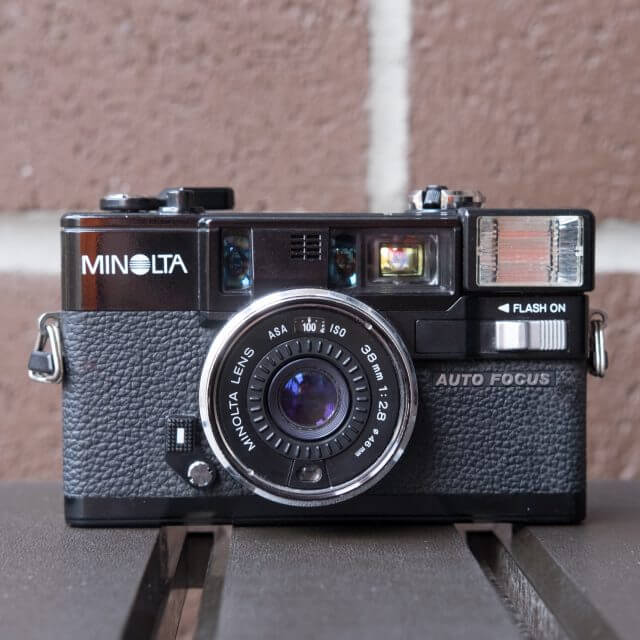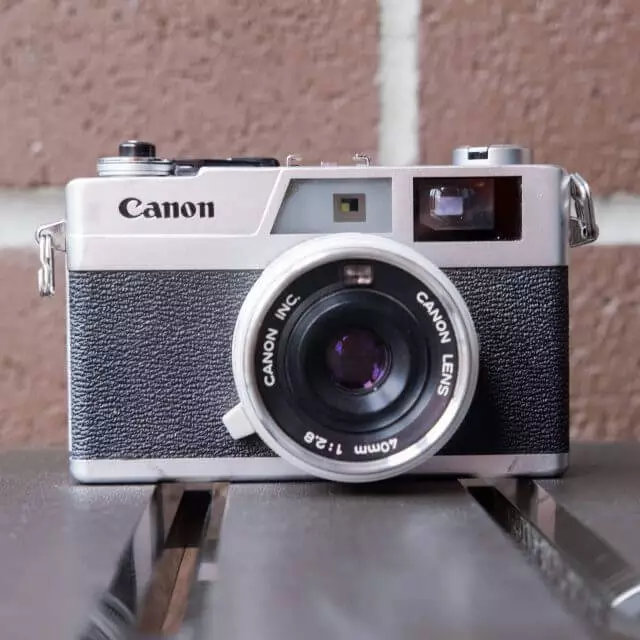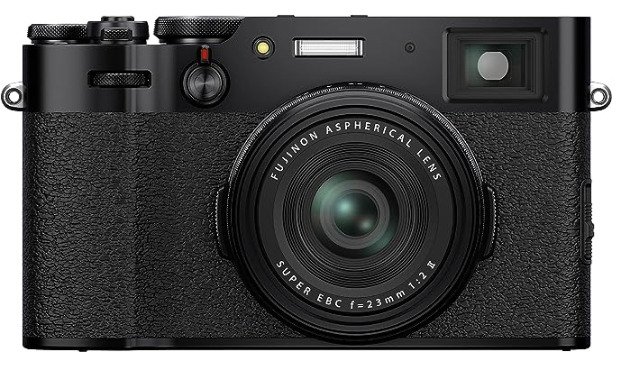Film photography is in a good place. True, digital is still tops — by a wide margin — but analog photography is holding its own and doesn’t appear to be prepared to give up much ground anytime soon (even in spite of the impending death of several beloved Fujifilm film stocks).
I’ve written more than once about some of the benefits of film photography, so I won’t rehash that all here. I will simply restate my general summation of why I think anyone should try film photography: because it’s fun.
Easily one of the most common topics people share with me concerning film photography is their desire to move beyond instant film/cameras without diving into medium format. What they are essentially looking for is a “fun” 35mm film camera.
For those individuals, I suggest cameras that are not only fun to use but are also affordable. If you’re in search of such a camera, here are five of my favorite, affordable, fun-to-use 35mm cameras (all cameras I own and use), in no particular order.

Olympus Infinity Stylus (mju)
Talk about a pocketable camera! The Olympus Infinity Stylus is a minimalistic, elegantly designed point-and-shoot camera with a sharp 35mm f/3.5 lens hiding behind the sliding door front (which acts as the on/off switch). There is a grand total of three buttons: shutter button, flash button, and self-timer button. Film is automatically advanced and rewound.
The camera’s chief annoyance is that the flash mode resets each time you slide the front cover closed; so, if you never use flash (like me), you’ll have to cycle through to turn it off every time you turn the camera on. Considering how fun and easy the Infinity Stylus is to use and how good its lens is, the flash issue isn’t much of a concern. This is the ultimate example of a camera that you can have with you at all times.


Minolta Hi-Matic AF2
The Hi-Matic AF2 is another point-and-shoot but, unlike the Olympus Infinity Stylus, it possesses a few manually controlled features that some users might prefer. Film advance and rewind are performed manually, as is ISO selection via a ring located around the 38mm f/2.8 lens. There’s a pop-up flash and a self-timer lever.
The Hi-Matic AF2 is a significantly larger camera and isn’t one I consider pocketable. The AF2 also sports a lens that I slightly prefer over all the rest on this list, not necessarily in terms of outright sharpness or any other particular technical quality — I just like the way it renders.


Canon Canonet 28
The Canonet 28 is a rangefinder with a sharp 40mm f/2.8 lens. Focusing is done manually, while exposure is normally selected automatically by the camera, ranging from 1/30th of a second to 1/620th of a second. There is, however, a quasi-manual mode that allows the user to select an aperture between f/2.8 and f/16, but this mode fixes the shutter speed at 1/30th of a second. The camera forgoes a built-in flash in favor of a hot shoe.
The lens is sharp and the yellow rangefinder patch is easily visible. The Canonet 28 is similar in size to the AF2, though the Canonet’s metal construction makes it a heavier camera. I appreciate the physical robustness and operational simplicity of this camera.


Canon Elan 7NE
If you want as seamless as possible transition from digital to analog, the Canon Elan 7NE fits the bill. It looks and feels like a DSLR in almost every way. While I’m highlighting the Elan 7NE here, what’s true of all Canon EOS 35mm cameras is that they use Canon EF lenses, so you have access to an extensive selection of glass.
One particularly interesting feature of the Elan 7NE is the eye-controlled focusing; the camera will select an autofocus point based on where you’re looking in the viewfinder frame. It might sound a bit gimmicky but it actually works pretty well. Film rewind and advance are automatic; DX detection automatically determines film speed; there is a pop-up flash as well as a hot shoe. Again, 99% of this camera’s layout/features, including the PASM dial, will be very familiar to DSLR shooters.


Olympus XA
Even if you’ve never used a film camera you’ve probably heard about the Olympus XA. This tiny camera sports a sliding front cover (not an uncommon feature of Olympus’ compact cameras) that protects a sharp, contrasty 35mm f/2.8 lens. The XA is an aperture priority rangefinder with a leaf shutter. Aperture (ranging from f2/.8 to f/22) is selected with a switch that sits next to the lens. Focus is set with a lever below the lens. ISO is selectable from 25 to 800.
The brilliantly designed, pocket-friendly XA even features a switch on the bottom plate that serves triple duty as a +1.5 exposure compensation dial, a self-timer and battery check. The viewfinder feels a bit cramped (not surprising, given the overall compactness of this camera) and the rangefinder patch is dim, but those are acceptable compromises considering how awesome the Olympus XA is.


Final Thoughts On Affordable, Easy To Use Film Cameras
Every camera listed here can be obtained for no more than USD$100, making them ideal options for mid-level or even beginner film photographers. There are, of course, numerous other options available on the secondhand market; these are just a few of my favorites that fit the aforementioned criteria of “fun, easy and affordable.” If you have any recommendations of your own please share!

More Film Camera Fun
- The beginners guide to film photography – see over at I Still Shoot Film for an amazing amount of information on film photography
- A Starter’s Guide to Film Photography: What You Need to Know – great for the beginner from Photodoto
To learn more about affordable film cameras, check out the links below.





8 Comments
Cool article. I’ve never tried any of those cameras, but maybe I’ll keep my eye open for them.
If you want a real vintage feel for film photography, pick up an Argus C3. It might be a little more difficult to use since everything is manual, but really not more so than the Minolta or Canonette. For being such a vintage camera, they aren’t hard to find or very expensive, and there are additional lenses and filters available, though they are a bit harder to find. I used on in photography classes in high school and recently reacquired my C3 and am looking forward to shooting with it again after 40+ years.
Yes, “The Brick”! I do have a C3 but the shutter is stuck at 1/300 and I haven’t taken the time to try to fix it. So it’s just collecting dust at the moment. Thanks for the recommendation though, I might get inspired to open up my C3!
Great article thanks. I bought a Canon EOS 620 last year from the USA on ebay. This camera was fully serviced and checked before the sale, I paid about £50 for it. The 620 was the 1st (actually the 2nd) EOS camera that Canon produced. Naturally all my L lenses fit and have had great results using it. (I do process my own B&W film and scan the negs to get them on my computer)
Perhaps I should add that I started work in London as an assistant photographer / darkroom gremlin in a studio in the 1960’s (I was 16). The joy of shooting with film and processing the results just take me back to those early days. Digital photography is truly exciting, but I do still love the ‘graininess’ that a film print produces. We are now so fortunate to be able to combine both technologies as we wish.
Great point about living in a hybrid photography age; oddly, I didn’t get serious about film until I’d been shooting digital for a while. And I agree, “real” grain is the best!
The elan 7e was great camera I I loved using it, the eye focus was very good and I hope someday they have it back in dslr, would be great for sport/birding
Every time I use my Elan I wonder why Canon ditched the eye control focus.
Thanks for this! I’m looking for a film point and shoot to just carry around. Nice to see some good options that aren’t overpriced.